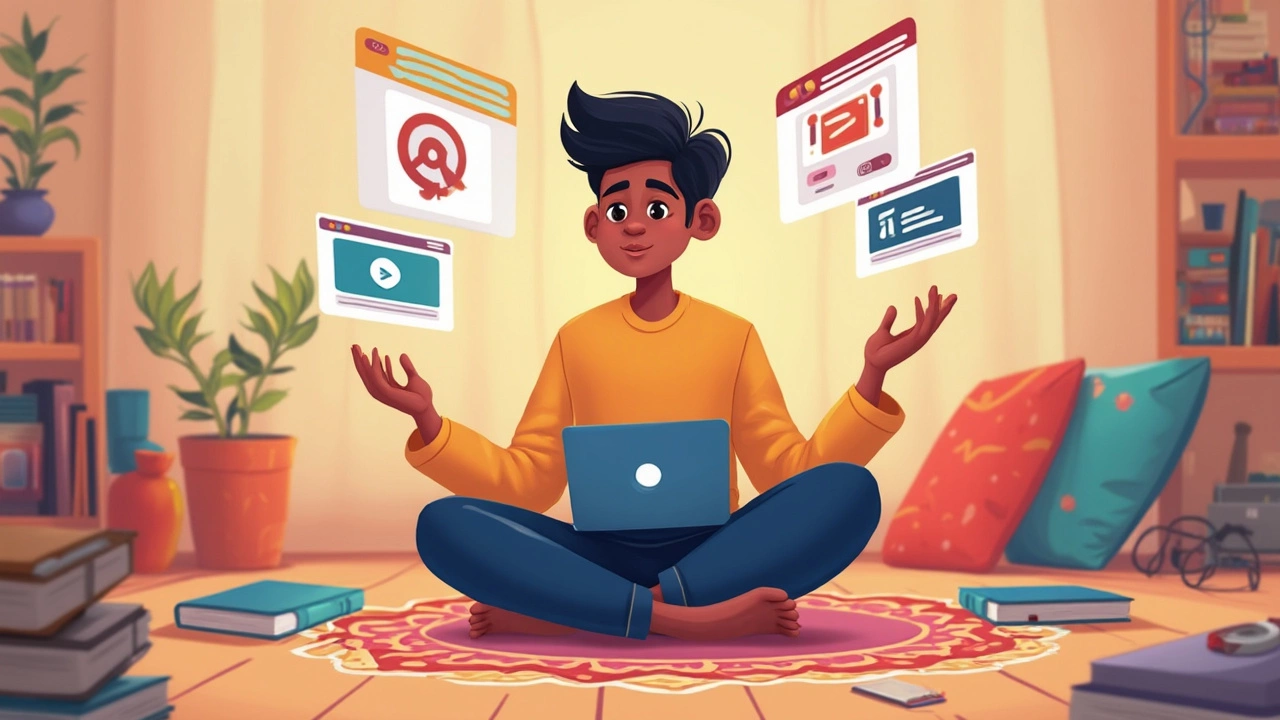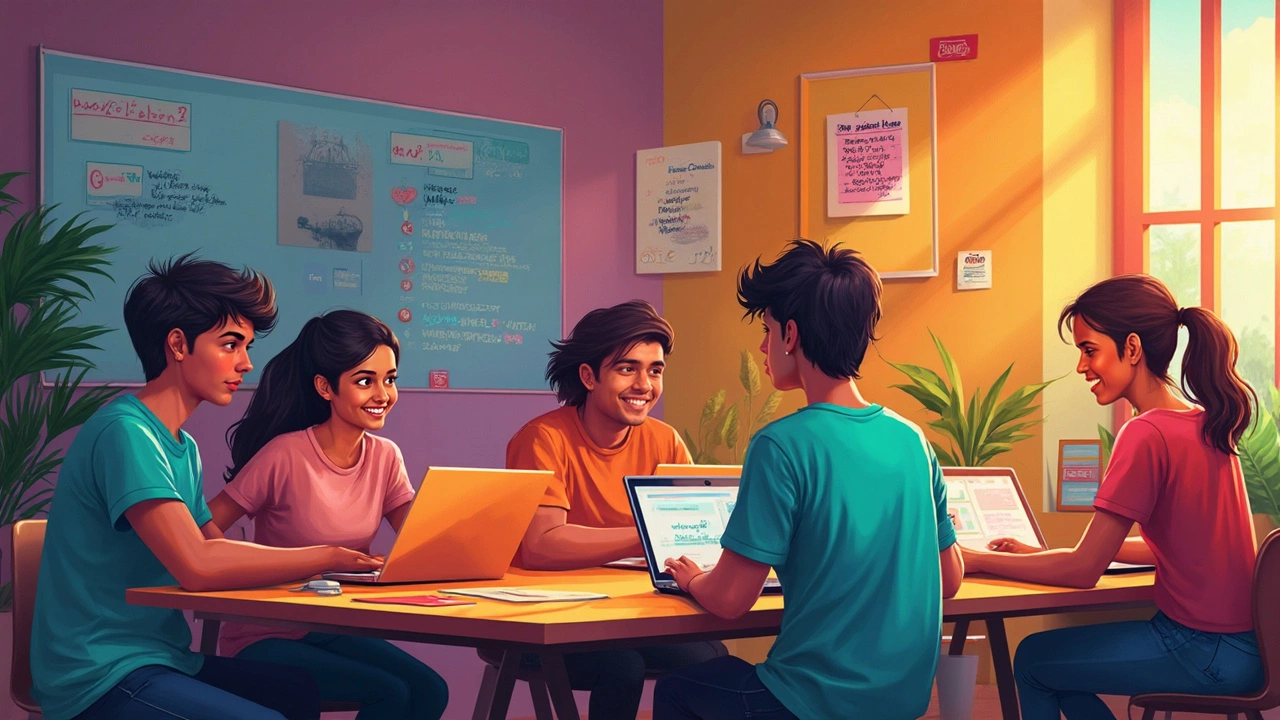Trying to figure out the best place to learn coding online can feel like picking a streaming service—there are dozens out there, each promising the easiest or fastest way to become a programmer. When you’re just starting out, though, your first choice actually makes a big difference. Some sites throw you into the deep end with lots of theory, others hand you a bunch of bite-sized exercises. The way they mix projects, challenges, and advice decides whether learning to code sticks or gets really frustrating, really fast.
A quick tip? Before you get distracted by flashy features or big promises, think about how you like to learn. Do you need videos? Do you want to write real code from lesson one? Or maybe you just want step-by-step exercises until you build some confidence. The platform you pick should match your style, not the other way around. Otherwise, you’ll probably bounce off before coding even gets fun.
- Why Your First Coding Platform Matters
- Top Platforms Worth Checking Out
- What Features Set Them Apart
- Tips for Picking What Fits You
- Staying Motivated While Learning
Why Your First Coding Platform Matters
The first coding platform you pick can shape how you feel about programming for years. Choose something too technical, and you’ll probably quit before solving your first bug. Go for one that’s too easy, and you might get bored or fail to build real skills. In a 2023 survey by Stack Overflow, almost 60% of developers said they dropped at least one online coding platform early on because it didn’t match their pace or learning style.
It’s easy to assume that all beginner platforms teach the same stuff, but they aren’t built the same. Here’s why your first choice sticks with you:
- Early wins matter: Platforms that give you simple projects or quick feedback help you stick with it. A Duolingo-style streak or badges can actually boost your motivation.
- How you learn makes a difference: Some folks need videos and direct explanations, while others want to play around and experiment. The “feel” of each site can push you ahead or make things worse.
- Real coding counts: Platforms that let you write, run, and debug your own code from the start will get you comfortable with real tools—not just quizzes and drag-and-drop blocks.
- Community support: Places with active forums, mentors, or peer-review systems give you answers fast and make everything less scary when you get stuck.
| Platform Name | Dropout Rate (%) | Key Reason for Leaving |
|---|---|---|
| Codecademy | 36 | Lack of real project work |
| freeCodeCamp | 23 | Overwhelmed by course length |
| Udemy | 41 | Hard to stay motivated without structure |
If you’re aiming to keep your momentum, balance ‘learn by doing’ with enough support to keep you going. The best beginner coding platforms toss you quick wins, connect you to folks who help, and give you real coding tools—right from the start. That’s the difference between powering through those early, awkward attempts and deciding coding just isn’t for you.
Top Platforms Worth Checking Out
If you’re starting fresh, these platforms don’t just teach—they guide you every step. Each one has a different vibe, so it pays to dig into what actually makes them tick. Let’s break down the heavy-hitters.
- Codecademy: Popular for a reason. The lessons are hands-on, and you start typing code right away. Over 50 million users have gone through their interactive exercises. Their free plan covers basics in Python, JavaScript, HTML, and more. If you go Pro, you unlock quizzes, real projects, and career paths.
- freeCodeCamp: Totally free, with thousands of hours of tutorials and coding challenges. The curriculum is project-based, so you build real stuff as you go. You can earn certification in web development by finishing the projects—no credit card required.
- Coursera: This one is more academic. They team up with big-name universities (think Stanford or Michigan) to deliver full beginner tracks. You’ll watch video lectures, submit assignments, and sometimes even get feedback from peers. If you want a more classroom feel at home, this fits.
- Scratch: For total newbies or younger learners, Scratch is visual learning at its best. You snap blocks together to make games and animations. No typing code yet, but it teaches logic and problem-solving. Even MIT recommends it for kids and adults who want the basics.
- edX: Like Coursera, but a bit more technical. There are beginner programming courses from Harvard (CS50 is their classic intro class), and you can audit almost everything for free. Some classes offer verified certificates if you ever want proof of your coding platforms skills.
Here’s a quick glance at what you get on each:
| Platform | Cost | Best For | Key Features |
|---|---|---|---|
| Codecademy | Free & Paid ($12–$30/mo) | Interactive learners | Browser coding, quizzes, guided paths |
| freeCodeCamp | Free | Project-based practice | Certifications, real projects, open source |
| Coursera | Free & Paid (usually $40–$79/course) | University content | Lectures, assignments, peer feedback |
| Scratch | Free | Kids & total beginners | Visual coding, make games or art |
| edX | Free & Paid ($50–$300/course for certs) | Academic, big-picture learners | Harvard CS50, course variety, self-paced |
A cool fact: freeCodeCamp’s whole platform was built by a team of volunteers, and most of their students work through the curriculum alone, with over 40,000 earning their certification each year. It shows you don’t need to pay a ton to start learning real skills.
No matter which you pick, the point is to find the place where you want to keep coming back—and these platforms are a solid bet for doing just that.

What Features Set Them Apart
If you compare a bunch of coding platforms side by side, a few things really make each one unique—stuff that actually changes how you learn, not just how nice the homepage looks. Some platforms are built around video tutorials, like Codecademy and freeCodeCamp. You get to watch someone walk through code and then try it out yourself. Others like LeetCode or HackerRank stick to interactive coding problems, giving you feedback and hints as you work through challenges right in your browser. It’s like having a mini-checkpoint after each small victory, which keeps you moving forward.
Another big difference? Real-world projects versus short practice problems. On platforms like freeCodeCamp, they push you to build actual apps, websites, or games early on, so you end up with projects you can show off—or even use for a job portfolio. Sites such as SoloLearn and Grasshopper, on the other hand, focus more on short lessons and interactive challenges that feel a bit like leveling up in a game. This bite-sized approach is great for picking up skills on your phone or in between classes.
Let’s talk mentorship and community. Sites like Code.org and freeCodeCamp have huge discussion forums where you can ask questions or team up with other learners. Some even offer a direct line to mentors. Being able to get unstuck quickly makes a ridiculous difference: nobody remembers everything after a video, but when someone helps you out after you’re stuck an hour, you actually learn the thing.
You should also keep an eye out for instant feedback. A lot of beginner-friendly platforms show you exactly where your code is broken—highlighting mistakes and nudging you to fix them. You’re not left wondering what went wrong, which cuts down on frustration and makes things click much faster. Finally, some platforms track your streaks, awards, or overall progress with badges, which is a surprisingly strong motivator to keep going, even if you just care about outscoring your buddies.
If you’re still on the fence, most of the best options let you try a bunch for free. That way you can play around, see what sticks, and pick the one where learning doesn’t feel like a boring chore.
Tips for Picking What Fits You
If you’re torn between platforms, start by asking yourself what you want from the coding platforms out there. Some people need clear structure, while others like to experiment and break things. That’s not a small difference: you’ll do way better on a site that matches how you actually learn, not how you think you’re supposed to learn.
Here’s a no-nonsense way to pick a platform that won’t let you down:
- Figure out your learning style. If you like videos and step-by-step walkthroughs, Codecademy and freeCodeCamp will feel familiar. Love challenges and instant feedback? Try LeetCode or HackerRank. Want to build real projects from the start? Scrimba and The Odin Project do this well.
- Check for hands-on practice. Reading about code is not the same as writing code. Look for platforms that let you code right in your browser—places like Codecademy, Sololearn, and freeCodeCamp make this super simple.
- Community and support. If you’re likely to get stuck, pick a site with active forums or help channels. freeCodeCamp’s community is famously supportive, and The Odin Project uses Discord for quick help. A strong community means you won’t be left hanging when you hit a wall.
- Cost and access. Some platforms start free but put their best lessons behind paywalls. Others (like freeCodeCamp) are fully free. Don’t get caught off guard. Know what you’re getting for your money, if you plan on paying.
- Track record and updates. Platforms like Codecademy have been around for over a decade and update lessons regularly. They also partner with real tech companies for new content. Check when the site’s last major overhaul was—outdated content usually means tougher bugs and less relevance.
To get a practical idea of what’s out there, check out this comparison of some leading beginner coding sites:
| Platform | Free Version? | Browser-Based Coding? | Community Support | Regular Updates? |
|---|---|---|---|---|
| Codecademy | Yes (with paid Pro) | Yes | Forum, Chat | Yes |
| freeCodeCamp | Yes (all) | Yes | Huge Community | Yes |
| LeetCode | Yes (with paid Premium) | Yes | Forum | Yes |
| Sololearn | Yes (with paid Pro) | Yes | Active Social Feed | Yes |
| The Odin Project | Yes (all) | No (project-based, install required) | Discord | Yes |
Try out a few platforms for a couple of days each. See which one you return to without forcing yourself. That’s usually the site you’ll get the most out of. Keep your goal in mind—if you want to build apps, pick somewhere that guides you through projects. If you’re prepping for interviews, focus on platforms loaded with real practice problems.

Staying Motivated While Learning
Sticking with coding isn’t just about picking the right platform—it’s about staying interested when things get tough. Beginners hit roadblocks, and that’s totally normal. Even people who’ve coded for years forget a semicolon and break everything. So, how do you keep going?
First, set small, clear goals. If you try to build the next Instagram in your first month, you’ll probably end up frustrated. Start with simple projects—like a calculator or a basic website—because finishing something feels good and shows progress. Platforms like Codecademy let you track your growth with streaks and achievement badges, which actually helps your brain connect effort with rewards. That’s classic habit science in action.
Next, join a community. Whether it’s Reddit, Discord, or the site’s own forums, don’t code alone. Platforms like freeCodeCamp have huge support groups ready to jump in with answers or encouragement. Post your questions, no matter how basic they seem. Odds are, someone just asked the same thing yesterday. If you’re a bit stuck, even a quick conversation can get you moving again.
Mix up what you do. If you only watch videos or only solve quizzes, you’ll probably burn out or get bored. Switch between lessons, real mini-projects, chat forums, or even simple coding games. Code.org and Scratch use games and interactive stories to pull in younger learners, but adults enjoy this stuff too. It’s not just about fun—changing activities fights fatigue and keeps your brain engaged.
- Celebrate wins, no matter how small. Got a single line of code working? That counts.
- Keep a log or journal of what you learn every day. It’s motivation you can actually see.
- If your motivation drops, take a break. Walk, listen to music, or try a new coding topic for a day or two.
Above all, remember that learning to code is a marathon, not a sprint. Consistency beats intensity, so find a platform and routine you enjoy. The more you show up, the more natural coding feels, and soon the struggles become puzzles you want to solve. That’s how you stick with it, and eventually, that’s how you win.

Write a comment